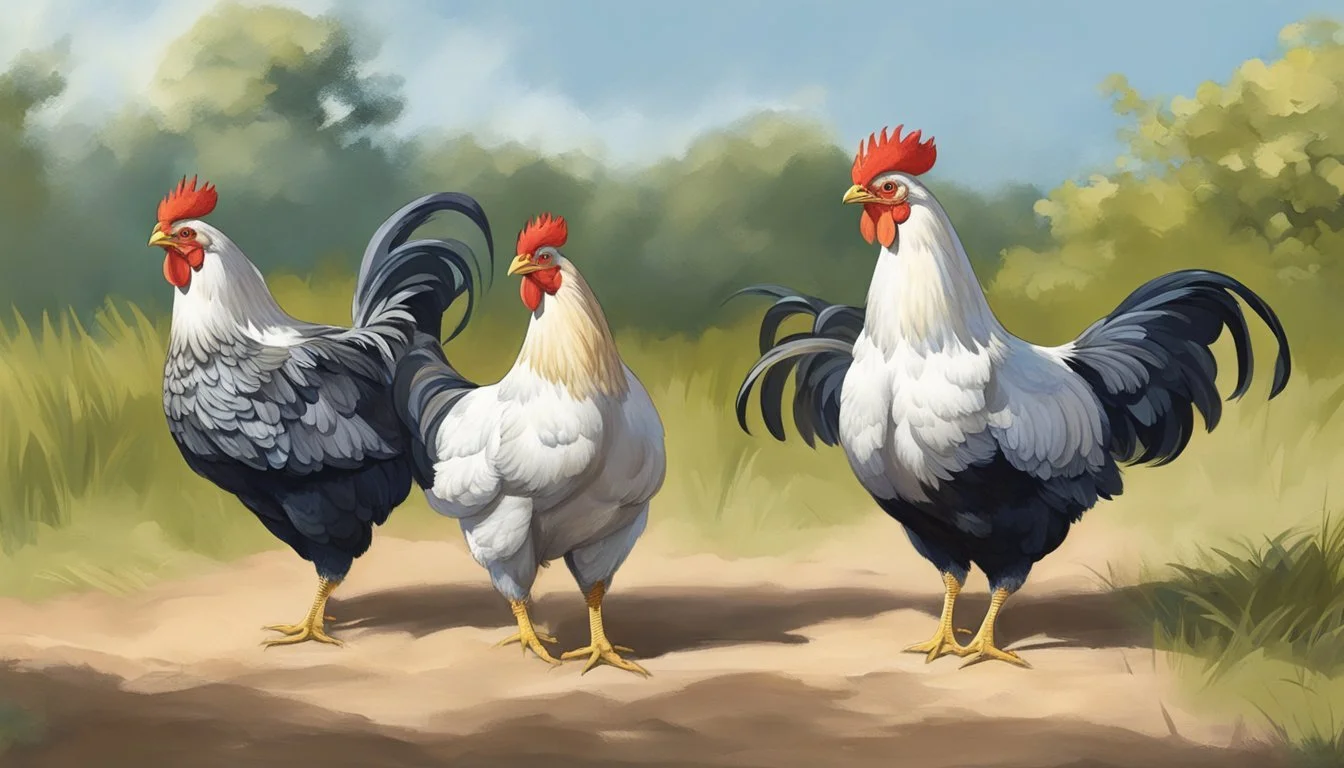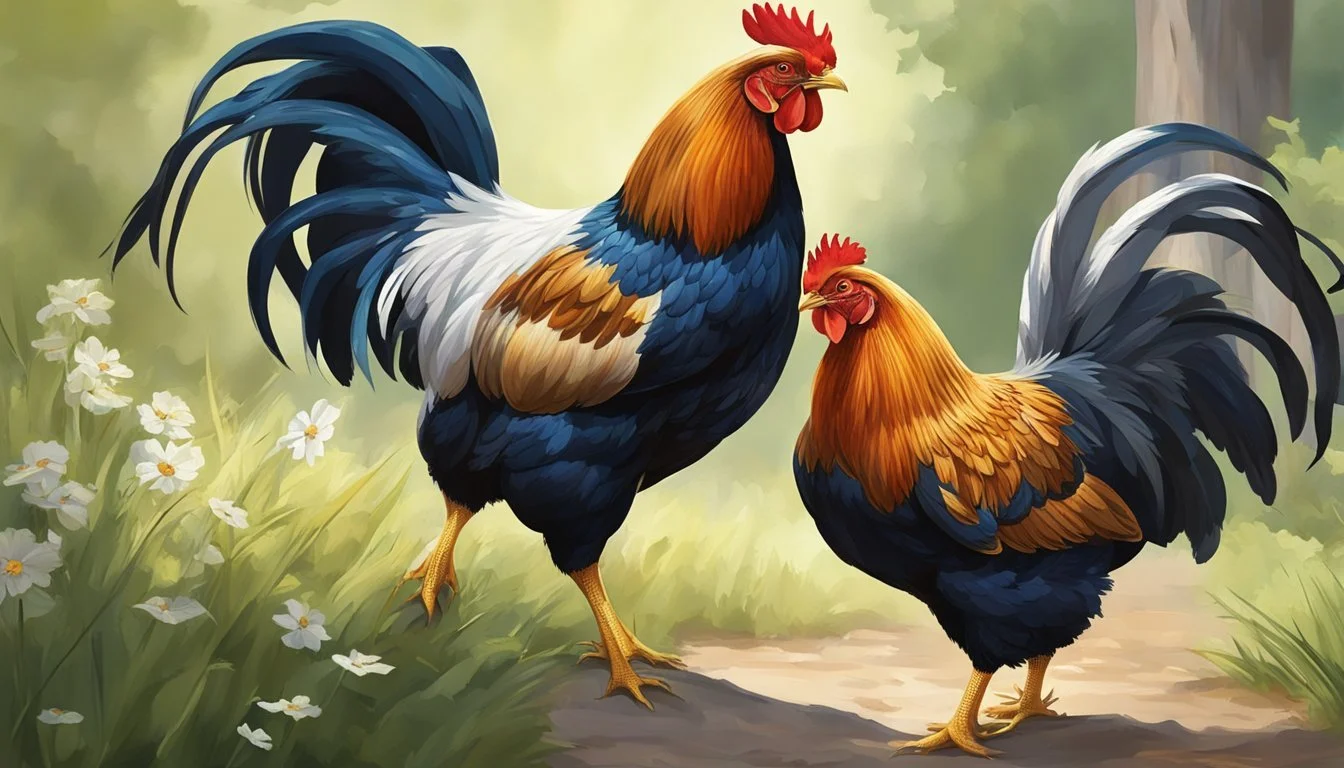What are the Signs of Heat Stress in Chickens?
Identifying Critical Symptoms
Understanding the signs of heat stress in chickens is essential for maintaining their health and well-being, especially during the warm months or in hot climates. Chickens are susceptible to heat stress due to their physical makeup; they lack sweat glands, which are crucial for regulating body temperature in many animals. As temperatures rise, ensuring the comfort and safety of these birds becomes a priority for poultry owners.
Signs of heat stress can be both observable and immediate. Chickens may begin to pant with their beaks open and exhibit rapid breathing, an initial response to high temperatures. Other behaviors include lifting their wings away from their bodies and squatting low to the ground. Physical signs can also be apparent, such as pale combs and wattles, which indicates the chicken's attempt to dispel body heat.
For those entrusted with the care of poultry, identifying and responding to these signs promptly can prevent the detrimental effects of heat stress. It is possible to alleviate these symptoms through various means, in addition to seeking methods to prevent and treat heat stress effectively. Providing shade, adequate water, and proper ventilation are steps that can be taken to create a safer environment for chickens in hot weather.
Recognizing Heat Stress
Recognizing the signs of heat stress is essential for maintaining the well-being of chickens, as it can lead to serious health issues and affect their productivity. The following subsections detail specific indicators to watch for in chickens that may signal the onset of heat stress.
Physical Signs and Symptoms
Physically, heat-stressed chickens may exhibit panting with their beaks open and rapid breathing. They can have a pale comb and wattles, indicating overheating as blood flow increases to these areas to release heat. Some chickens may also experience diarrhea or have closed eyes.
Behavioral Changes
Behaviorally, chickens under heat stress often display lethargy or reduced activity levels. They may also spread their wings away from their bodies in an attempt to cool down. A decrease in appetite and subsequent reduction in feeding often occurs, as their bodies are trying to minimize metabolic heat production. There's typically a decrease in egg production and an increase in thirst due to their efforts to cool down and prevent dehydration.
Physiological Indicators
On a physiological level, body temperature rises significantly in chickens suffering from heat stress. This is often coupled with increased heat tolerance in an effort to cope with high temperatures and humidity. Ensuring adequate ventilation and monitoring environmental temperatures are key to managing these physiological responses to heat.
Environmental Triggers
Certain environmental conditions act as triggers for heat stress. Direct sunlight, high environmental temperatures, and excessive humidity can exacerbate the condition. The absence of shade or poor ventilation in the living space can also lead to heat stress.
Age and Weight Factors
Both the age and weight of chickens influence their susceptibility to heat stress. Younger birds, such as laying hens, and heavier breeds, like some broilers, often have lower heat tolerance and may show signs of heat stress under conditions that older or lighter birds might withstand.
Management and Prevention
Effective management and prevention of heat stress in chickens encompasses strategic modifications to their living environment, attentive care to their hydration needs, thoughtful adjustments to their diet, and fostering their natural behavioral adaptations.
Housing and Environment
Creating an optimal housing environment for chickens is crucial in preventing heat stress. It should involve adequate ventilation to allow air to circulate freely, thus reducing humidity and temperature. Installing fans can enhance airflow, and it is also beneficial to incorporate shade options where chickens can escape the sun. Structures or natural foliage can provide these shaded areas. Furthermore, misting systems can be set up to cool the air around the coop, although it's important to prevent the living areas from becoming damp as this can have adverse effects.
Water and Hydration
Hydration is one of the essential factors in managing heat stress. Chickens need constant access to cool water as their water intake increases significantly during hot weather. Providing multiple water sources can ensure all have access without overcrowding. Addition of electrolytes to the water can help in maintaining proper hydration and replenishing essential minerals lost through panting.
Diet and Nutrition
Adjusting the feeding schedule can help manage heat stress by feeding chickens during the cooler parts of the day, usually early morning or late evening. This adjustment helps prevent the build-up of excess body heat through digestion during the hottest periods. Incorporating calcium, vitamins like vitamin C, and probiotics can strengthen the chickens' overall health and aid in heat stress resistance. These nutritional supplements support eggshell quality and strengthen the immune system.
Behavioral Adaptations
Chickens have inherent behaviors to cope with heat, such as panting and spreading their wings to dispel heat. Providing dust bathing areas can help them cool down since the act of dust bathing is a natural cooling mechanism. Additionally, allowing them to exhibit natural behaviors like seeking cooler ground and wetting themselves can be facilitated by ensuring your chickens have adequate space and resources to do so.
Heat Stress Treatment
Treating heat stress in chickens requires timely intervention, appropriate rehydration solutions, and careful management for long-term recovery. Ensuring the immediate cooling off of the birds and providing essential electrolytes are foundational steps to help the chickens return to their normal behavior and temperature.
Immediate Interventions
When a chicken shows signs of heat stress, it is critical to act swiftly to reduce their body temperature. Immediate interventions include moving the chicken to shade or a cooler environment. If possible, immerse the bird in cool (but not cold) water to rapidly lower its temperature. Alternatively, spray the chicken with cool water, focusing on the legs and underside, as direct sun and high ambient temperatures can quickly induce shock.
Rehydration Solutions
Providing rehydration solutions is essential for chickens suffering from heat stress. Offer fresh water supplemented with electrolyte powder, ensuring constant access to encourage drinking. Household solutions like Gatorade or Pedialyte can also be diluted and served to chickens to restore electrolyte balance. Avoid using sugar-heavy drinks, as they can worsen dehydration.
Long-Term Recovery
For long-term recovery, management practices should be evaluated and adjusted. Ensure that chickens always have access to shade and fresh water. Modify feeding schedules to cooler periods of the day, reducing heat production from digestive processes. Continuously monitor chickens' behavior for signs of recovery, such as the return to normal feeding patterns and egg production. Implementing these measures will support the chickens' return to health while mitigating the risks of future heat stress incidents.
Nutritional Supplementation
In addressing heat stress in chickens, specific nutritional supplements can play a crucial role in maintaining their health and productivity. These supplements often focus on replenishing electrolytes and minerals lost through excessive heat, as well as providing vitamins and compounds that support physiological and metabolic functions.
Electrolytes and Minerals
Electrolytes such as sodium bicarbonate, potassium chloride, and calcium are essential for chickens experiencing heat stress. These minerals help regulate the bird's acid-base balance and support nerve and muscle functions. For instance:
Potassium chloride is often included in diets to replace potassium lost through elevated body temperature.
Sodium bicarbonate aids in combating the effects of acidosis that can occur during heat stress.
Calcium is crucial, not just for bone health, but for proper eggshell formation in laying hens, which may be compromised during periods of heat stress.
Vitamins and Compounds
The inclusion of vitamins and certain compounds in a chicken's diet can mitigate some of the detrimental effects of heat stress. Notably:
Vitamin C supplementation has been shown to alleviate the negative impact on metabolic process and productive performance, as it contributes to immune system support and stress reduction in chickens.
Betaine serves as an osmoprotectant, helping cells to retain water, which may be beneficial in extremely hot conditions where dehydration is a risk.
Environmental Modifications
Making strategic environmental modifications can significantly mitigate the impact of heat stress on chickens, ensuring they have a conducive environment to maintain health and productivity. Proper coop design and management play a crucial role in preventing heat stress by regulating environmental temperature and air quality.
Enhancing Ventilation
Ventilation is key in maintaining a cool and fresh air supply in the coop. Installing fans can increase air flow and help to keep chickens cool. It is essential to position fans strategically to effectively circulate air without creating drafts that could stress the birds.
Utilizing Shade and Cooling
Providing shade can reduce the coop’s internal temperature and protect chickens from direct sunlight's thermal effects. Additionally, implementing systems such as misters or evaporative cooling can help chickens cool off by increasing the efficiency of their natural heat loss mechanisms.
Managing Humidity
Maintaining appropriate humidity levels is pivotal in preventing heat stress. High levels of humidity can impede evaporative cooling, while too low humidity could dehydrate the chickens. Monitoring and adjusting humidity, alongside efforts to regulate carbon dioxide and maintain acid-base balance, is essential in designing a comfortable environment for poultry.
Emergency Response and Supervision
In the event of heat stress in chickens, swift intervention is imperative to mitigate health risks. Knowing how to monitor for early signs of stress, administer first aid, and manage the recovery process is crucial for caretakers.
Monitoring and Identifying Stress
When temperatures rise, supervision becomes a critical component of poultry care. Caretakers should routinely check for signs of heat stress which include panting, wings held away from the body, and lethargic behavior. The use of a thermometer to measure the ambient temperature can help supervisors recognize unsafe conditions before chickens exhibit distress.
First Aid for Heat Stroke
Once a chicken shows symptoms of heat stroke, immediate treatment is necessary. Move the affected bird to a shaded area with ample ventilation. Providing cool water to drink helps, but avoid ice cold water as it can be a shock to the system. In severe cases, immerse the chicken in a tub of cool water for incremental periods to lower body temperature. Always monitor the bird closely for signs of recovery or further distress.
Post-Heat Stress Recovery
Post-heat stress supervision should ensure that chickens return to their normal temperature and behaviors. This includes offering electrolyte solutions to restore hydration and maintain a stable environment with reduced stress triggers. Consistent observation following a heat stress event is vital in assessing whether the birds have recovered fully and to take further action if any long-term effects are evident.





